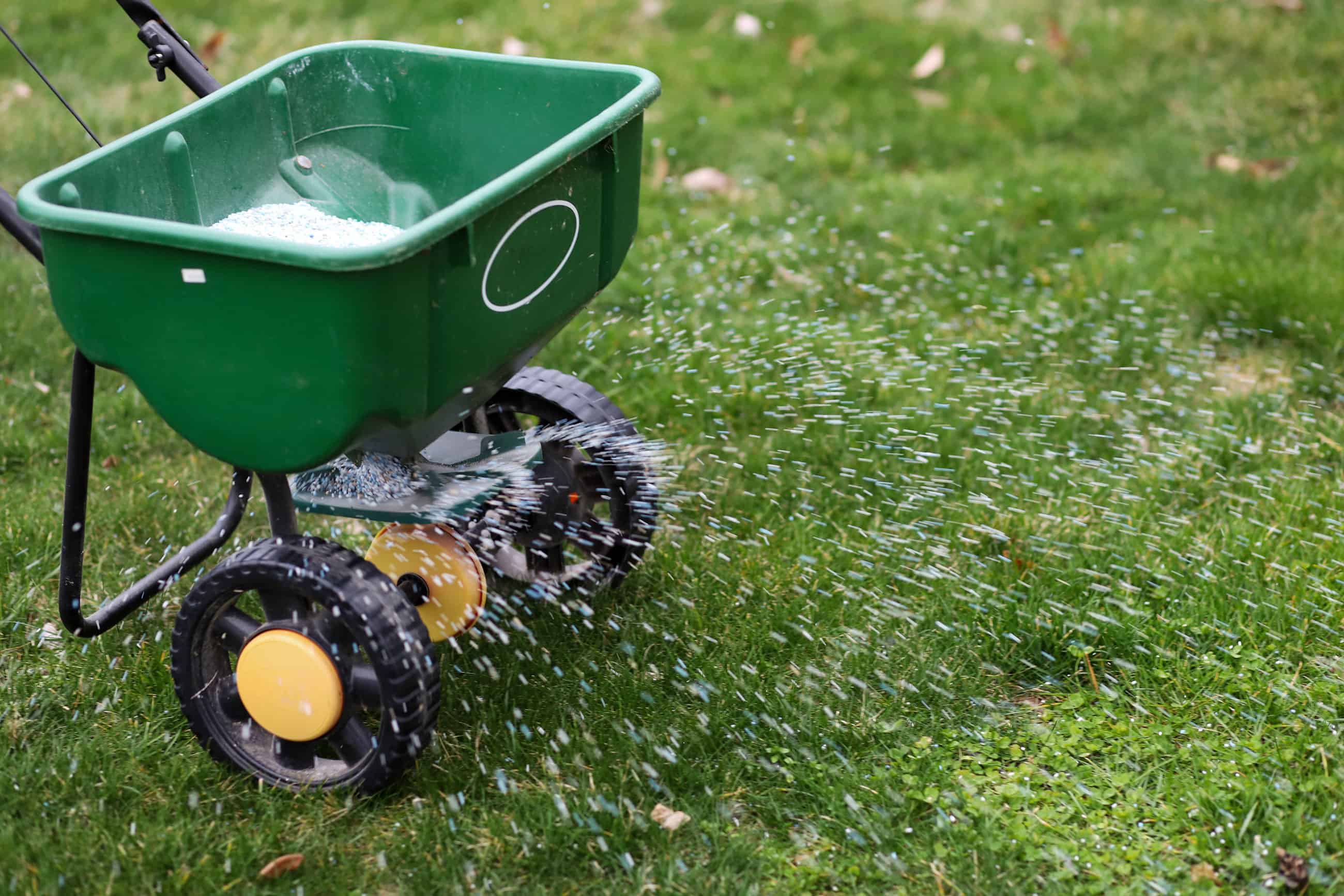We’ve Already Fertilized The Grass For You

During the establishment phase, fertilizer applications aren’t recommended other than a low-nitrogen starter fertilizer to help root establishment and boost growth. MicroLife Brown Patch 5-1-3 is an excellent option because the nitrogen is 100% slow-release, so it will not burn the new grass or roots. Plus, it contains an ideal amount of potash & phosphorous, which will aid in healthy, rapid root development & overall plant health. What’s more, it has innumerable amounts of other soil building & root strengthening nutrients & microbes, including mycorrhizal fungi. You can enter your zip code on their website to locate a retailer nearest you.
We Regularly Apply Pre-Emergent Herbicides
The grass fields are on a regular pre-emergent herbicide program. However, some weeds will occasionally be inevitable when growing a live product outdoors when significant weather events disrupt our maintenance schedule. In these instances, we are diligent about resuming our maintenance asap and inspecting the fields for weed emergence, spraying these with strong post-emergent herbicides.
Seasonal Fertilizer & Pre-Emergent Herbicide Applications
After establishment, seasonal weed control and fertilizer applications by variety are recommended to keep your lawn in optimal shape. Seasonal fertilizers & pre-emergent herbicides are essential to maintaining a healthy, lush green lawn. Sticking to a well-planned maintenance schedule is the best way to ensure your turfgrass lawn remains healthy & dense enough to combat pests, such as weeds, insects, disease, and more!
Increase Fertilizer Efficacy & Reduce Waste
Some people opt to perform soil test before fertilizing. Soil testing enables them to choose the best fertilizer possible and helps minimize excess & waste. If you decide not to test the soil, apply a fertilizer with a 3-1-2 or 2-1-1 ratio at a rate equivalent to 1 pound of nitrogen per 1,000 square feet. Please keep in mind that fertilizing needs will vary by variety and many environmental factors. It is essential to do your research before choosing which product to apply to your yard. You can learn more about fertilizing here.
Proper Ground Prep Is Key To Weed Management
Maintaining weeds can sometimes be difficult, especially during the grass’s first year or if the grass is unhealthy. Even if there were no weeds in the area before installation, yards that receive new topsoil, are cultivated, and receive heavy irrigation for new sod establishment also create the perfect conditions for seed germination & subsequent weed growth. Although there is no way to prevent all future weed emergence 100% of the time, proper ground preparation will help greatly reduce their presence. Read more about controlling weeds pre-install.
Post-Installation Weed Emergence
Unfortunately, weeds are not uncommon shortly after installing new grass, even if there were no weeds growing in the area before installation. Yards that receive new topsoil, are cultivated, and receive heavy irrigation for new sod establishment also create the perfect conditions for seed germination & subsequent weed growth. Weed seeds spread in various ways that are often unavoidable, such as contaminated topsoil, dormant seeds, bird/animal droppings, wind, rain & water runoff, neighboring properties, and more.
Weed Concerns In New Grass
Unfortunately, knowing where the weed(s) originated can be increasingly challenging the more time passes from the delivery day. It is crucial to notify us promptly when weeds are observed on the grass blocks during installation or as soon as they emerge on the new grass blocks so we can identify their origin. Weeds coming with fresh grass will be observable within a day or two because they’d be so near the surface, sprouting quickly with frequent irrigation and sunlight, and will not be attached to the soil below. Weeds sprouting through the grass block seams are emerging from the existing or new topsoil.
Proper Cultural Practices Reduce Weed Prevalence
The best way to control weeds is by maintaining good cultural practices, such as frequent mowing, fertilizing based on soil test results, applying pre-emergent herbicides properly, adequate irrigation, etc. Following a well-planned maintenance program based on your cultivar, yard conditions, soil type, lawn expectations, and seasonal weather will encourage optimal performance. Also, spot-spraying weeds as soon as they emerge will prevent additional weed seed contamination.
Timing Is Critical For Pre-Emergent Applications
A warm-season turfgrass maintenance program should always include the use of pre-emergent herbicides. To ensure efficacy, you should take care to apply pre-emergent herbicides at the correct time. Applying these herbicides outside of ideal soil temperatures can render the herbicide useless.
Pre-Emergent Herbicides Can Slow Growth
Be advised that pre-emergent herbicides should never be applied to newly planted grass. If you have treated your soil with pre-emergents, you will need to wait for 90 days before planting the grass, unless otherwise noted on the label. Likewise, pre-emergents should not be applied for 90 days post-install.
Tuberous Rhizome Weeds Should NEVER Be Hand-Pulled
Some weeds, such as nutsedges & dandelions, should not be hand-pulled unless great care is taken to thoroughly remove all plant parts from the soil. Leaving behind tubers/nutlets, rhizomes, etc., can result in newly emerged weed plants. It is best to control these weeds by spot-spraying them with post-emergent herbicides shortly after they sprout & before they go to seed. For example, spot spraying nutsedge with SedgeHammer+ is highly effective. That being said, you should broadcast the herbicide if the weed issue is widespread, the coverage area is large, etc.
Additional Resources:
- Fertilizing Texas Warm-Season Grasses
- Zoysiagrass Yearly Maintenance Program
- Bayer Herbicide Product & Pictorial Weed Guide
- Aggie Turf’s Weeds of Texas Turf Picture Guide
- Lawn Care Life YouTube Channel


